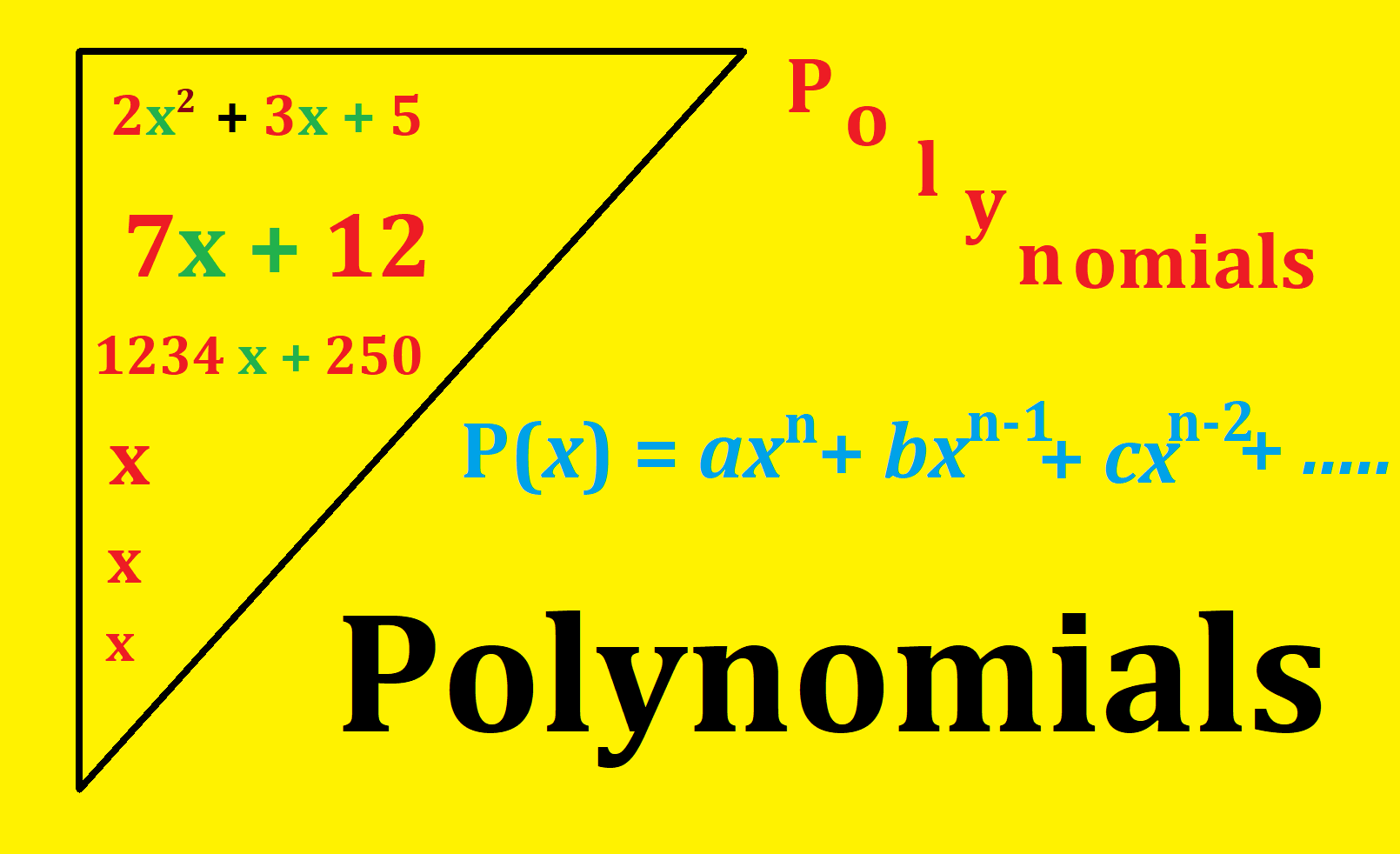A polynomial is a simple expression of constants and variables in which the powers of variables are in terms of whole numbers. A polynomial can be built from constants and symbols by means of arithmetic operations like addition, multiplication and exponentiation to a non-negative integer power. For example, p(x) = ax^n + bx^(n-1) + cx^(n-2) + … is a polynomial in one variable of degree n. In secondary school level we study about types of polynomials and relation between its zeros and coefficients of polynomial. Normally, we operate the polynomial of degree two in High School stage, but a brief description of degree three polynomials is also given for knowledge only. Division of polynomial with a constant and also with another polynomial is also the main point of interest in junior as well as senior classes. In middle classes, we just do simple divisions of polynomials, but in secondary we divide a cubic polynomial with a quadratic or cubic polynomial.
What is the Degree of the Polynomial?
Each term of the polynomial consists of the products of a constant, called the coefficient of the term and a finite number of variables raised to non-negative integral powers. Degree of a term is the sum of the exponent of is variable factors. The degree of a polynomial is the largest degree of its variable term. For example: If we consider the polynomial p(x) = 2x² + 2x + 5, the highest power is 2. So, the degree of the polynomial is two. Let us consider another polynomial p(x) = 5x + 3. In this polynomial the highest power of x is 1, so degree is one.
What are Linear, Quadratic and Cubic Polynomials?
A polynomial with degree 1 is called a linear polynomial. For example, 3x + 5, 4x, 7x/2 + 7, etc. A polynomial with degree 2 is known as quadratic polynomial. For example, 3x² + 4x, 4x² + 5x + 1, 6x², etc. Similarly, a polynomial with degree three is called a cubic polynomial.

What are Zeros of a Polynomial?
For any polynomial p(x), if p(k) = 0, then k is known as the zero of the polynomial. Number of zeroes depend on the degree of polynomial. For example, a quadratic polynomial may have atmost two zeroes. The geometrical representations of linear and quadratic polynomials can be obtained by observing the points of intersection made by polynomial at x – axis.
What is Division algorithm of Polynomials?
P(x) = g(x).q(x) + r(x), where p(x) is the dividend polynomial, g(x) is the divisor polynomial, q(x) is quotient polynomial and r(x) is remainder polynomial. The degree of r(x) should be less than s(x) or r(x) = 0. If r(x) = 0, then s(x) and q(x) are factors of p(x).
How do we do Synthetic Division of Polynomials?
The synthetic division of polynomials method works as follows:
- Arrange all the terms of the given dividend polynomial p(x) in the standard form.
- Write the coefficients of all the terms of dividend polynomial in a row.
- Find the zero of divisor of polynomial s(x) and write this value in the row of coefficients of p(x).
- Add zero to the coefficient of leading term.
- Multiply this result with the zero of s(x) and place the value below the second coefficient.
- Add elements in the second column and multiply this result with the zero of s(x). Place this result below the third coefficient.
- Continue this process till the sum of the last coefficients is obtained.
- The last row gives the coefficients of the quotient polynomial starting with the term having one power less than the divisor polynomial.
- If the remainder (the last term in the last row) is zero, then the divisor exactly divides the dividend polynomial.
What are polynomials? Explain with examples.
Polynomials are expression of a variable with powers as a whole number. The coefficient of variable should be real numbers. For example, 2x² + 5x + 9 is a polynomial with degree two whereas 2x + 5 is a polynomial with degree 1.
How do polynomials work?
We use polynomials to represent the mathematical situations in expression. It includes variables and constants. For example, the cost of 4 books and 5 copies is ₹550. It can be represented as 4x + 5y = 550, where x represent the cost of a book and y represent the cost of a copy.
How do you identify a polynomial?
An expression of variables and real constants, where the powers of variables are whole number, is identified as a polynomial.
Is 1 a polynomial?
Yes, 1 is a polynomial. It can be written as 0x² + 0x + 1, which shows that 1 is a polynomial.



